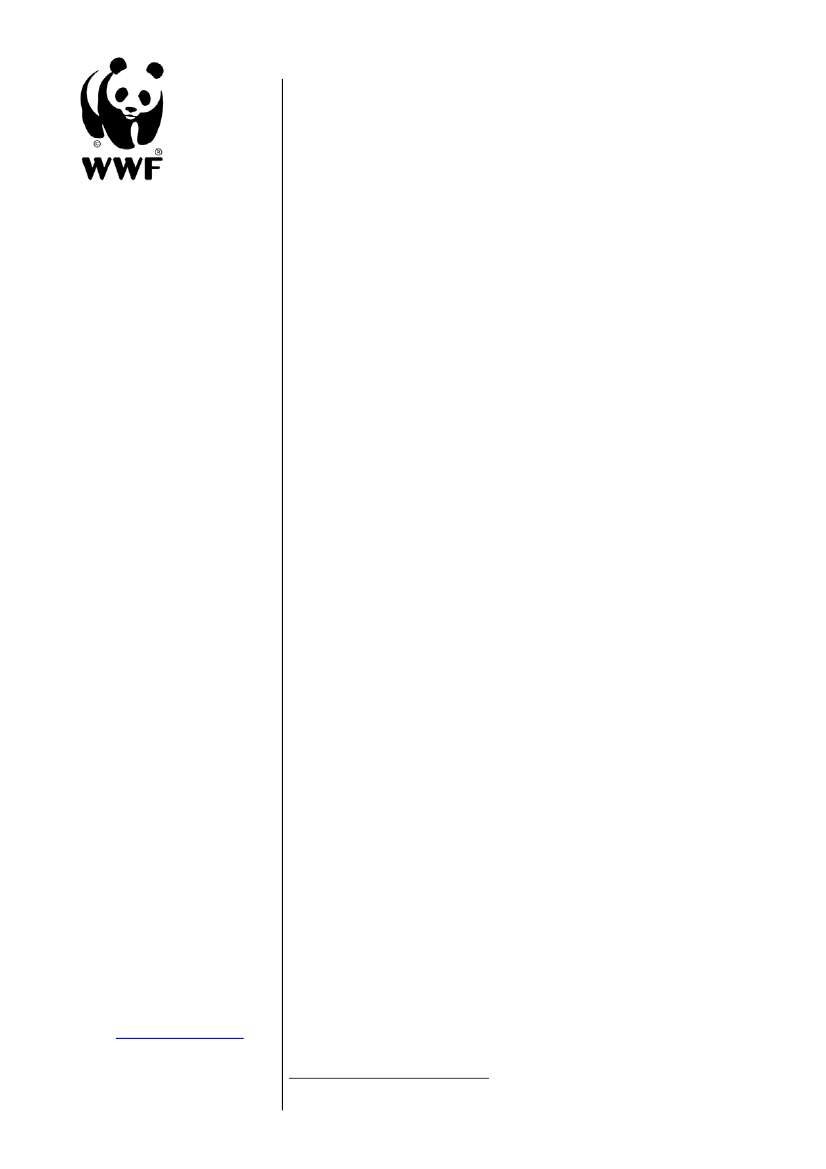
2007 TACs & Quotas Proposal for selected
fish stocks & fisheries
Every year, ICES advice calls for a further reduction in fishing quotas
of pressured stocks and each year WWF has observed a blatant
disregard of this scientific advice by the Council of Ministers. The
result of such mismanagement is the continuous deterioration of
European Fish stocks, and a continued delay of the implementation
of ecosystem based fisheries management – a cornerstone of the
reformed Common Fisheries Policy (CFP).
The Fisheries & Maritime Commissioner has on several occasions
outlined the need for a gradual approach to TACs (Total Allowable
Catches) and quotas and effort reduction - limiting reductions to 15%
(except for stocks under recovery plan to 25%). The gradual
approach however does have the downside of delaying the
profitability of the sector in the longer terms, as necessary
adjustment of TACs to stock depletion is missing and therefore the
productivity of the stock is significantly reduced in long term as
shown in the flatfish non-paper produced by the European
Commission. It also puts the biological integrity of targeted and by
caught fish stocks and ecosystem robustness of marine ecosystem
at great risk of permanent collapse. This should be borne in mind
when considering decisions at this year’s December Council
meeting.
The reformed CFP will maintain its failure in delivering sustainable
fisheries management as long as sound scientific advice based on
the precautionary principle continues to be ignored. WWF urges the
European Commission and the European Council of Fisheries
Ministers to set quotas according to ICES advice and implement
measures that will eradicate wasteful fishing practices (through
technical measures and bycatch quotas) and illegal fishing practices
as well as improve data collection through the increased use of
observer programmes. Only by taking such measures will we finally
implement ecosystem based management of fisheries and safe the
resource all fishing business is depending on – the fish stocks
WWF is focusing in this briefing on cod and associated stocks, plaice
and sole, elasmobranchs and the proposal on the introduction of
electric fishing and the deepwater gillnet fishery. A priority for both
Members States and European Commission should be the
identification of the cause of the significant .so called “unaccounted
for removals”, which according to ICES figures make up 40% of the
cod catches. ICES also go on to say that plausible contributions to
these unaccounted removals are discards of catches in excess of the
quota,and mis- and underreporting of catches. (ICES, 2006
1
)..
Discarding
In certain fisheries (i.e. whiting, haddock, plaice and Nephrops)
discards of fish remain very high; in some fisheries discards rate of
up to 90% have been recorded (ICES, 2006
2
). Improvements in gear
selectivity to reduce the catches of fishes below Minimum Landing
Sizes (MLS) are becoming imperative to protect fish stocks.
1
2
POSITION PAPER
December 2006
For further information
contact:
Carol Phua
Fisheries Policy Officer
WWF European Policy Office
1040 Brussels, Belgium
Tel:
+32 2 743 8800
Direct: +32 2 740 0928
Fax:
+32 2 743 8819
E-mail:
http://www.ices.dk/committe/acfm/comwork/report/2006/oct/cod-347d.pdf
http://www.ices.dk/committe/acfm/comwork/report/2006/oct/ple-nsea.pdf